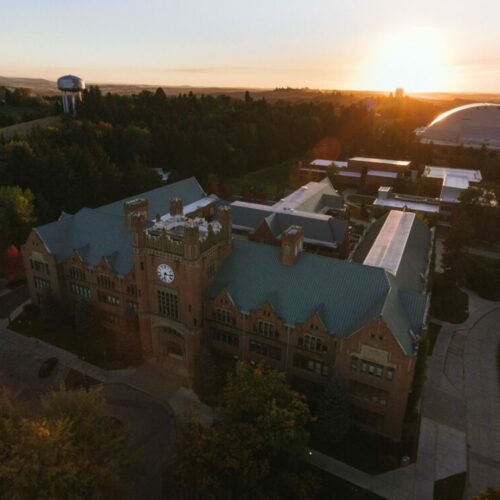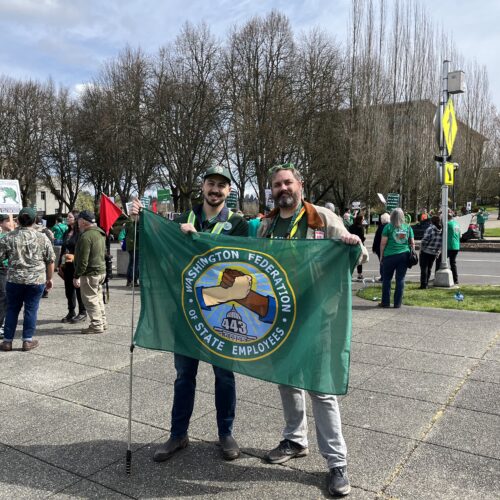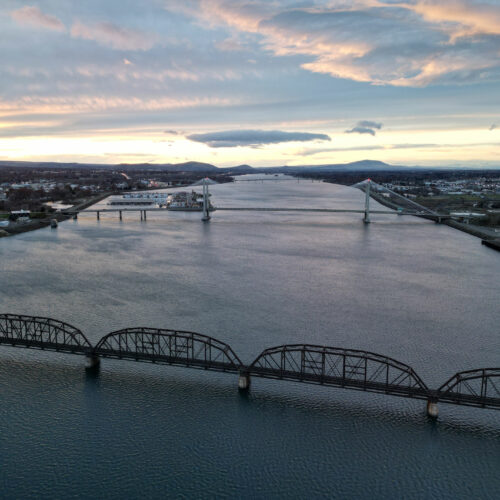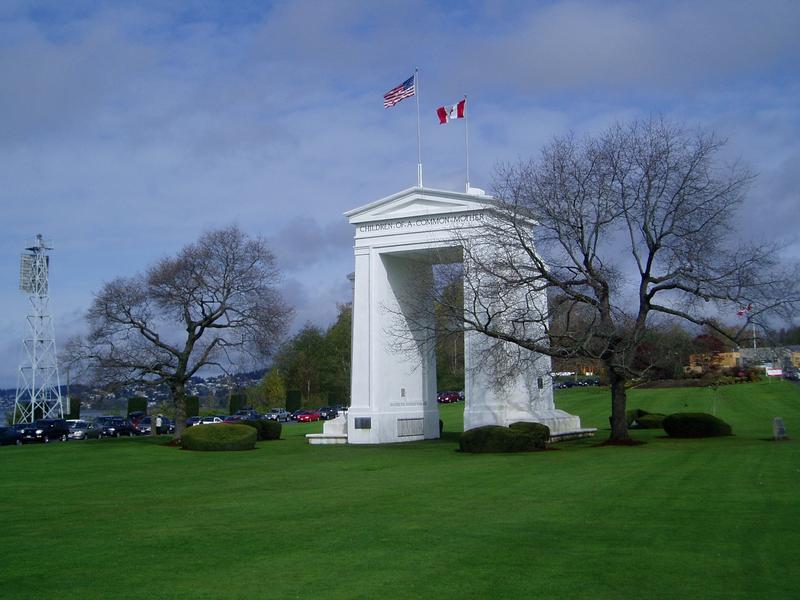
U.S. – Canada Border Restrictions Extended, Forcing Big Changes To Lives In Washington And B.C.
Listen
The months-long closure of the U.S.-Canada border to non-essential crossings has been extended again. The border crossing restrictions will last at least until late September, probably longer, due to the pandemic. The outlook is leading people who used to cross regularly to make major life changes.
Some U.S. politicians and businesses want the border closure eased. But a lot of Canadians look at the uncontrolled spread of COVID-19 south of the border with alarm.
Len Saunders is an immigration attorney who works in Blaine, Washington, just a few blocks from the Canadian border. When the U.S and Canada tightened the screws on discretionary border crossings back in March, Saunders expected his business to take a hit. Instead, he’s busier.
“I feel like I’ve gone from a marital counselor for a lot of my clients who are separated, to a travel agent now that Canadians can fly to the U.S. with no restrictions from airports even though the border was closed, to a wedding coordinator at the Peace Arch Park,” Saunders said in an interview.
Saunders has observed a boomlet of weddings this summer at the border park in Blaine. To understand why, it helps to know the COVID-era crossing rules. Married spouses can cross to reunite with one another. But an unmarried person wanting to visit their loved one on the other side gets turned away.
“A lot of couples who are separated by the border closure — Americans and Canadians — are realizing that this border closure is not going to end anytime soon. It is going to continue on at least until the end of the year,” Saunders predicted. “So, what they are now doing is they are making arrangements to get married on the American side of the Peace Arch Park.”
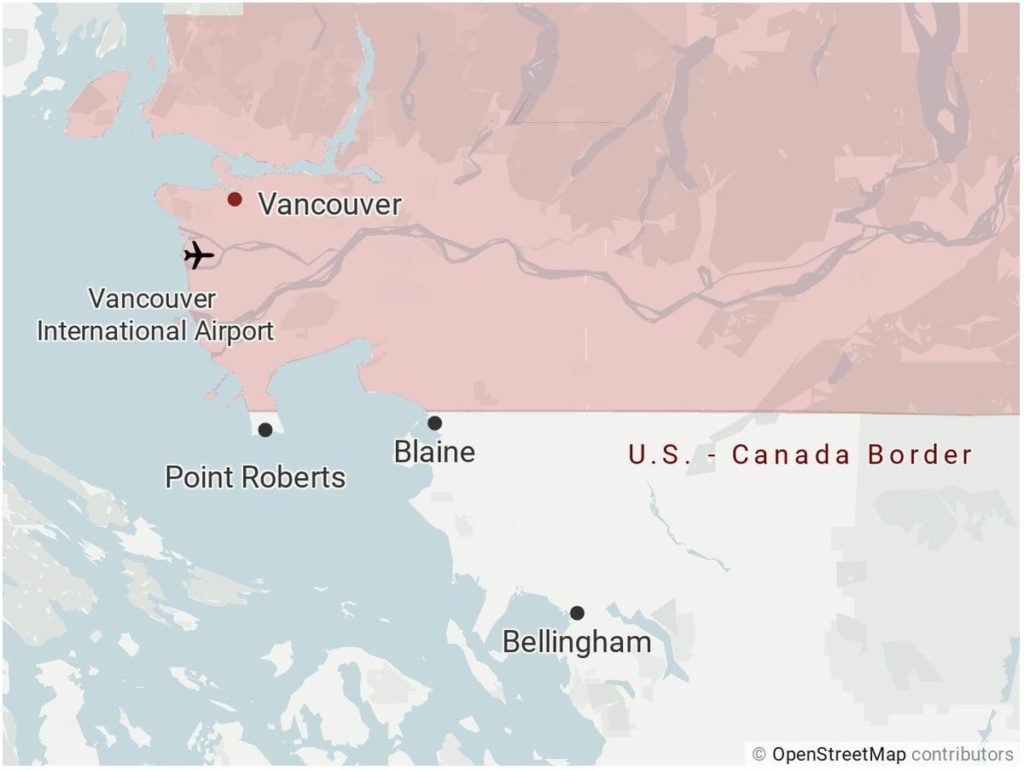
Point Roberts , Washington, on the southern tip British Columbia is stuck between a rock and a border closure during the pandemic. CREDIT: Esmy Jimenez/KUOW. Created with DataMapper
Students face prospect of being blocked from B.C. schools
Another Pacific Northwest border community experiencing major disruptions is the nearby U.S. enclave of Point Roberts. The only road connection to this five-square mile peninsula goes through British Columbia.
Twenty to thirty students from Point Roberts — and more from Sumas and Lynden, Washington — are enrolled in K-12 schools just across the border in what’s known as the Lower Mainland. Point Roberts fire chief Christopher Carleton relayed the news that Canadian public health officials will not countenance youngsters crossing the border daily to attend class in person beginning next month.
“The children not being able to go to school on the Lower Mainland are looking at possibly breaking up the family unit, having one parent living on the Canadian side and one parent here,” Carleton said. “We’re hoping we don’t have to go to that level.”
The fire chief has championed his town’s COVID response in the absence of a local elected government in the unincorporated community that he estimated has shrunk to slightly under 1,000 residents. He said extensive virus testing in Point Roberts since April has produced no positive COVID results. Carleton and his neighbors have asked for a travel exception for locals and second-home owners.
“We are a COVID-free community to the best of our knowing,” Carleton said in an interview.
Members of Congress are taking up the cause of Point Roberts and several other similar geographic oddities cut off by the international border such as Hyder, Alaska, Minnesota’s Northwest Angle and Campobello Island, New Brunswick.
Washington state delegation members Rep. Suzan DelBene, Rep. Rick Larsen, Sen. Patty Murray and Sen. Maria Cantwell wrote the acting U.S. ambassador to Canada last week seeking consideration of a “phased approach to lifting border restrictions, as conditions permit.” The members of Congress specifically requested that the challenging circumstances faced by people in Point Roberts be addressed.
“It is possible for U.S. citizens to travel safely between the mainland and Point Roberts since they can enter Canada by car and re-enter the United States without stopping or getting out of their car,” the joint letter said. “Individuals with drivers’ licenses from Point Roberts or who can prove ownership of lease in Point Roberts could be identified and allowed to transit between their town and the rest of Washington state.”
Congressional staffers said they did not receive any reply to the missive over the following week. A U.S. Customs and Border Protection spokesman in Seattle told public broadcasting that local concerns are passed up the chain of command. A statement emailed by the border agency on Friday said the U.S. and Canada “mutually determined” that non-essential travel at this time poses too much risk.
“As long as there is sustained human-to-human transmission of the virus, returning to previous levels of travel between the two nations places the individuals traveling through land ports of entry between the United States and Canada, as well as the personnel staffing those ports of entry, at increased risk of exposure to the virus associated with COVID–19,” the U.S. CBP statement said.
Strong majority of Canadians want land border closure to continue
The predicament of Point Roberts is also on the radar of British Columbia Premier John Horgan. At a recent press briefing, the premier wasn’t willing to endorse an exception, in part he said because of the difficulty of monitoring American through-travelers.
“With respect to Point Roberts, this is a very sticky issue and one that I’ve discussed with the federal government. I’ll leave it in their hands to manage,” Horgan said.
Horgan’s government has repeatedly said it favors keeping the border closed until COVID case numbers drop on the U.S. side.
The number of cases per capita is currently about five times higher in Washington state compared to B.C. The caseload is growing in the province right now while a summertime surge on the U.S. side of Cascadia is decelerating in most counties.
A poll of Canadians in July by Ipsos found 85% approved of the closure of the land border to non-essential travel and want it to stay that way at least until the end of the year.
Border crossing restrictions went into effect on March 21 and have been extended month by month by mutual agreement between Ottawa and the Trump administration. Truck drivers and “essential” workers in fields like health care and energy are permitted to cross as normal.
Canada, unlike the U.S. though, enforces a mandatory 14-day quarantine for all other arriving or returning travelers.
A proposal to revive cross border air travel with testing
The Vancouver Airport Authority and the bi-national Future Borders Coalition are pitching a pilot project to allow pre-screened passengers to fly between Seattle-Tacoma International Airport and Vancouver International (YVR) without quarantine. The idea is to provide the assurance needed to revive cross border travel by testing passengers 72 hours before departure followed by a second rapid test at the airport.
“You’re not going to take a two week vacation if you’re going to be stuck in a hotel for two weeks. You’re not going to go on a one day or two day business trip if you’re going to be quarantined for 14 days,” said Gerry Bruno, vice president of government affairs for YVR. “Unless we fix that, air travel is never going to happen.”
Bruno suggested Amazon and Microsoft employees who were going back and forth on a regular basis before the pandemic could become part of an initial trial for this travel recovery concept.
Those two tech giants are among a group of companies with large offices on both sides of the border. If the “health pre-clearance” trial project works, Bruno said it could be expanded beyond the Seattle-Vancouver corridor.
“We have to do something,” Bruno said. “Doing nothing is definitely not an option or we are never going to get out of this conundrum.”
Bruno estimated it could take four to six months to win government approval for the concept. Among the open questions is who would pay for the multi-layered virus testing. Other countries where air passenger testing takes place vary between billing the traveler or having airports, airlines and governments pick up the costs.
Bruno is one of the leaders of the Future Borders Coalition, a group that includes airlines, airport authorities and other businesses on both sides of the border. Other travel industry groups are also pushing for increased testing to restore confidence in cross border travel.
“We want to change the paradigm so that air travel is not seen as the spreader of the virus, isn’t seen as the problem,” Bruno said. “We want to be part of the solution.”
Reporter Craig McCulloch in Vancouver contributed to this report.
Related Stories:
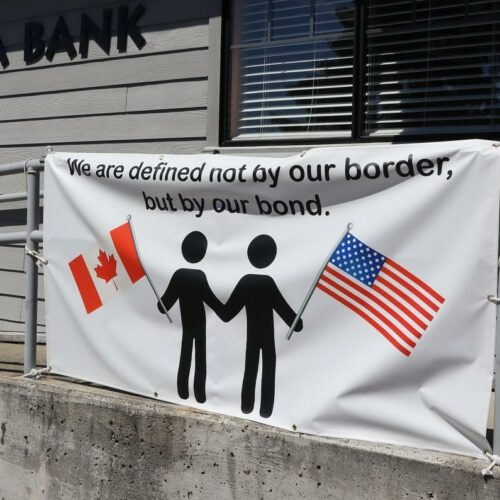
Ongoing Border Closure Makes Washington Enclave Of Point Roberts ‘Stir Crazy’
The United States and Canadian governments confirmed Thursday that pandemic border crossing restrictions will continue for at least another month to June 21. This is the fourteenth month-by-month extension of the closure of the northern border to nonessential crossings. The lengthy closure has been especially wearing on Point Roberts, a community in northwestern Washington state that is cut off from the U.S. mainland by the Canadian border.
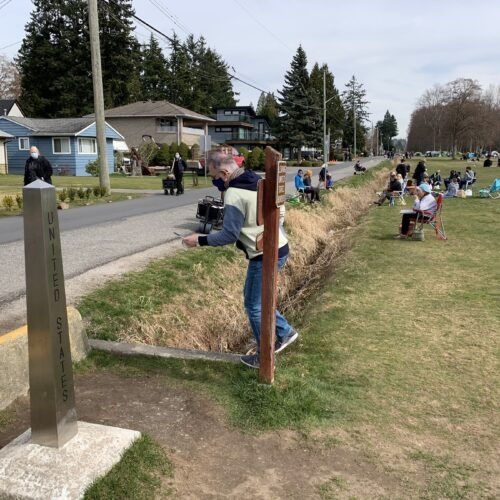
Couples And Families Separated By U.S.-Canada Border Closure Find Oasis At Peace Arch Park
This coming Sunday, March 21, will mark one year since the U.S. and Canada closed their shared border to nonessential crossings due to the pandemic. It’s anybody’s guess when the border might reopen for discretionary trips. In the meantime, every weekend rain or shine, Peace Arch State Park in Blaine, Washington, becomes a happening meetup point for couples and families separated by the northern border.
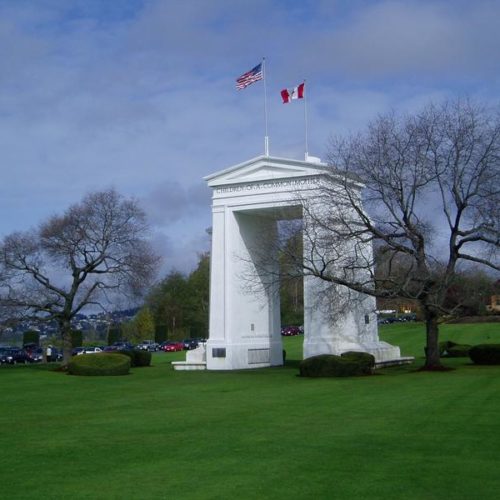
U.S.-Canada Border Closure Likely To Be ‘With Us For Awhile’ As Pandemic Persists
The most recent extension of the U.S.-Canada border closure expires this Friday, November 21, but no one expects the restrictions to be lifted then. First implemented in March, the closure of the land and sea border to nonessential crossings have been extended monthly by mutual agreement between Ottawa and the Trump administration.



